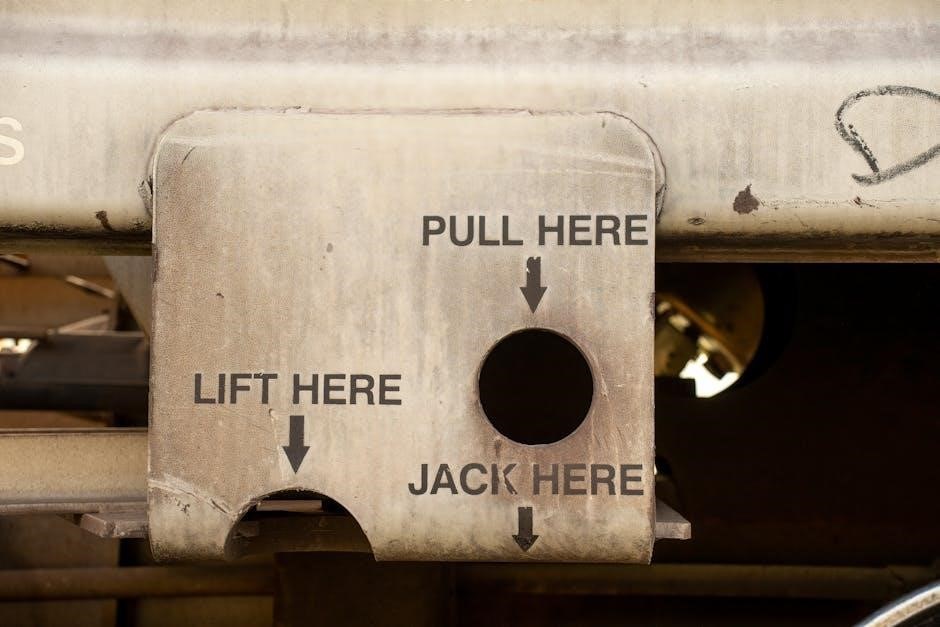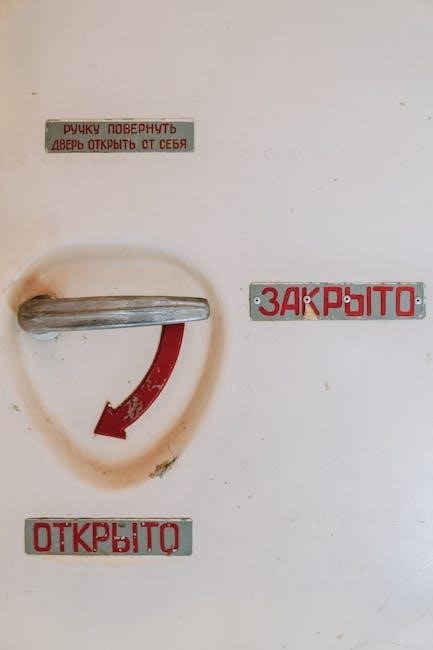Damaged handling per shipper instructions refers to specific guidelines for managing damaged goods during transit, ensuring safe handling, and preventing further loss or additional damage.


What Does Damaged Handling Mean?
Damaged handling refers to the process of managing goods that have been harmed during transit or storage, following specific guidelines set by the shipper. This ensures safe handling and minimizes further damage or loss.

It is a delivery exception indicating the carrier has identified damage and is adhering to the shipper’s instructions. The damage may involve the package itself or its contents, and the carrier’s actions depend on the shipper’s directives, which can include returning, holding, or delivering the item despite the damage.
Key Procedures for Handling Damaged Goods
Key procedures include immediate inspection, detailed documentation, separation from undamaged items, and communication with shippers and carriers to ensure compliance with specific handling instructions.

Inspection Procedures

Inspection procedures are critical for identifying and assessing damage to goods. Upon delivery, recipients should immediately examine packages for visible damage, noting any issues on the delivery receipt. Photographing damage from multiple angles provides clear evidence for claims. Carriers and shippers may also conduct their own inspections to determine the extent of damage. Proper inspection helps prevent further damage and ensures accurate documentation. It’s essential to follow specific guidelines outlined by shippers to maintain compliance and facilitate smooth handling processes. Thorough inspections are the foundation for resolving damaged goods cases effectively, protecting all parties involved. This step ensures transparency and accountability.
Documentation Requirements

Accurate and detailed documentation is essential when handling damaged goods. Recipients should note “Damaged” on the delivery receipt without assigning blame, as specific reasons may lead to denied claims. Photographing the damage from multiple angles provides visual evidence, while retaining all packaging materials ensures thorough inspection. Documentation should include a clear description of the damage, the condition of packaging, and any communication with the carrier. Maintaining detailed records is crucial for filing claims and demonstrating compliance with shipper instructions. Proper documentation protects all parties involved and facilitates a smoother resolution process. It serves as the foundation for addressing damaged goods effectively and efficiently. Always keep copies of all documents for future reference.
Separation from Undamaged Goods
Separating damaged goods from undamaged ones is a critical step in the handling process. This prevents further damage or contamination and ensures the integrity of intact items. Upon identifying damaged goods, they should be immediately isolated in a secure, designated area. This separation helps in maintaining organization and simplifies further actions, such as inspection or disposal. Proper segregation also aids in accurate documentation and communication with shippers and carriers. By keeping damaged goods separate, handlers can focus on resolving issues specific to those items without affecting the rest of the shipment. This step is essential for efficient and effective damage management. Always follow shipper instructions for segregation to ensure compliance and minimize complications. Proper separation is key to maintaining operational efficiency and customer satisfaction. It ensures that undamaged goods remain unaffected and can be processed or delivered without delay. This practice is vital for upholding quality standards and avoiding potential legal or financial repercussions. By isolating damaged goods, handlers can address issues promptly and reduce the risk of further incidents. Proper separation is a cornerstone of effective damaged goods management and should always be prioritized. It ensures clarity in documentation, streamlines communication, and facilitates smoother resolution processes. Always adhere to established protocols for separating damaged goods to maintain operational integrity and customer trust. This step is crucial for ensuring that damaged items are handled appropriately without impacting the rest of the shipment. Proper separation is essential for efficient and effective damage management. It allows handlers to focus on resolving issues specific to damaged goods while ensuring undamaged items remain unaffected. This practice is vital for maintaining operational efficiency, upholding quality standards, and avoiding potential legal or financial repercussions. By isolating damaged goods, handlers can address issues promptly and reduce the risk of further incidents. Proper separation is a cornerstone of effective damaged goods management and should always be prioritized. It ensures clarity in documentation, streamlines communication, and facilitates smoother resolution processes. Always adhere to established protocols for separating damaged goods to maintain operational integrity and customer trust. This step is crucial for ensuring that damaged items are handled appropriately without impacting the rest of the shipment. Proper separation is essential for efficient and effective damage management. It allows handlers to focus on resolving issues specific to damaged goods while ensuring undamaged items remain unaffected. This practice is vital for maintaining operational efficiency, upholding quality standards, and avoiding potential legal or financial repercussions. By isolating damaged goods, handlers can address issues promptly and reduce the risk of further incidents. Proper separation is a cornerstone of effective damaged goods management and should always be prioritized. It ensures clarity in documentation, streamlines communication, and facilitates smoother resolution processes. Always adhere to established protocols for separating damaged goods to maintain operational integrity and customer trust. This step is crucial for ensuring that damaged items are handled appropriately without impacting the rest of the shipment. Proper separation is essential for efficient and effective damage management. It allows handlers to focus on resolving issues specific to damaged goods while ensuring undamaged items remain unaffected. This practice is vital for maintaining operational efficiency, upholding quality standards, and avoiding potential legal or financial repercussions. By isolating damaged goods, handlers can address issues promptly and reduce the risk of further incidents. Proper separation is a cornerstone of effective damaged goods management and should always be prioritized. It ensures clarity in documentation, streamlines communication, and facilitates smoother resolution processes. Always adhere to established protocols for separating damaged goods to maintain operational integrity and customer trust. This step is crucial for ensuring that damaged items are handled appropriately without impacting the rest of the shipment. Proper separation is essential for efficient and effective damage management. It allows handlers to focus on resolving issues specific to damaged goods while ensuring undamaged items remain unaffected. This practice is vital for maintaining operational efficiency, upholding quality standards, and avoiding potential legal or financial repercussions. By isolating damaged goods, handlers can address issues promptly and reduce the risk of further incidents. Proper separation is a cornerstone of effective damaged goods management and should always be prioritized. It ensures clarity in documentation, streamlines communication, and facilitates smoother resolution processes. Always adhere to established protocols for separating damaged goods to maintain operational integrity and customer trust. This step is crucial for ensuring that damaged items are handled appropriately without impacting the rest of the shipment. Proper separation is essential for efficient and effective damage management. It allows handlers to focus on resolving issues specific to damaged goods while ensuring undamaged items remain unaffected. This practice is vital for maintaining operational efficiency, upholding quality standards, and avoiding potential legal or financial repercussions. By isolating damaged goods, handlers can address issues promptly and reduce the risk of further incidents. Proper separation is a cornerstone of effective damaged goods management and should always be prioritized. It ensures clarity in documentation, streamlines communication, and facilitates smoother resolution processes. Always adhere to established protocols for separating damaged goods to maintain operational integrity and customer trust. This step is crucial for ensuring that damaged items are handled appropriately without impacting the rest of the shipment. Proper separation is essential for efficient and effective damage management. It allows handlers to focus on resolving issues specific to damaged goods while ensuring undamaged items remain unaffected. This practice is vital for maintaining operational efficiency, upholding quality standards, and avoiding potential legal or financial repercussions. By isolating damaged goods, handlers can address issues promptly and reduce the risk of further incidents. Proper separation is a cornerstone of effective damaged goods management and should always be prioritized. It ensures clarity in documentation, streamlines communication, and facilitates smoother resolution processes. Always adhere to established protocols for separating damaged goods to maintain operational integrity and customer trust. This step is crucial for ensuring that damaged items are handled appropriately without impacting the rest of the shipment. Proper separation is essential for efficient and effective damage management. It allows handlers to focus on resolving issues specific to damaged goods while ensuring undamaged items remain unaffected. This practice is vital for maintaining operational efficiency, upholding quality standards, and avoiding potential legal or financial repercussions. By isolating damaged goods, handlers can address issues promptly and reduce the risk of further incidents. Proper separation is a cornerstone of effective damaged goods management and should always be prioritized. It ensures clarity in documentation, streamlines communication, and facilitates smoother resolution processes. Always adhere to established protocols for separating damaged goods to maintain operational integrity and customer trust. This step is crucial for ensuring that damaged items are handled appropriately without impacting the rest of the shipment. Proper separation is essential for efficient and effective damage management. It allows handlers to focus on resolving issues specific to damaged goods while ensuring undamaged items remain unaffected. This practice is vital for maintaining operational efficiency, upholding quality standards, and avoiding potential legal or financial repercussions. By isolating damaged goods, handlers can address issues promptly and reduce the risk of further incidents. Proper separation is a cornerstone of effective damaged goods management and should always be prioritized. It ensures clarity in documentation, streamlines communication, and facilitates smoother resolution processes. Always adhere to established protocols for separating damaged goods to maintain operational integrity and customer trust. This step is crucial for ensuring that damaged items are handled appropriately without impacting the rest of the shipment. Proper separation is essential for efficient and effective damage management. It allows handlers to focus on resolving issues specific to damaged goods while ensuring undamaged items remain unaffected. This practice is vital for maintaining operational efficiency, upholding quality standards, and avoiding potential legal or financial repercussions. By isolating damaged goods, handlers can address issues promptly and reduce the risk of further incidents. Proper separation is a cornerstone of effective damaged goods management and should always be prioritized. It ensures clarity in documentation, streamlines communication, and facilitates smoother resolution processes. Always adhere to established protocols for separating damaged goods to maintain operational integrity and customer trust. This step is crucial for ensuring that damaged items are handled appropriately without impacting the rest of the shipment. Proper separation is essential for efficient and effective damage management. It allows handlers to focus on resolving issues specific to damaged goods while ensuring undamaged items remain unaffected. This practice is vital for maintaining operational efficiency, upholding quality standards, and avoiding potential legal or financial repercussions. By isolating damaged goods, handlers can address issues promptly and reduce the risk of further incidents. Proper separation is a cornerstone of effective damaged goods management and should always be prioritized. It ensures clarity in documentation, streamlines communication, and facilitates smoother resolution processes. Always adhere to established protocols for separating damaged goods to maintain operational integrity and
Disposal or Return Processes
Disposal or return processes for damaged goods are determined by the shipper’s instructions and the extent of the damage. If the damage is severe, the shipper may instruct the carrier to dispose of the goods, ensuring environmentally responsible practices; In cases where the damage is minor, the goods may be returned to the shipper for repair or repackaging. Proper documentation, including photos and detailed reports, is essential to facilitate these processes. Communication between the carrier and shipper is critical to ensure compliance with agreed-upon procedures. The carrier typically handles the logistics of disposal or return, while the shipper provides clear guidance to minimize losses and maintain customer satisfaction. Timely execution of these processes helps prevent further complications and ensures smooth resolution. Always follow established protocols for disposal or return to maintain operational efficiency and compliance with regulations. This step is crucial for finalizing the handling of damaged goods and ensuring all parties are in agreement. Proper disposal or return processes protect both the shipper and carrier from potential liabilities and ensure a professional resolution to the situation. By adhering to these guidelines, handlers can effectively manage damaged goods and uphold high service standards. This process is essential for maintaining trust and ensuring that damaged items are handled responsibly; Always prioritize clear communication and adherence to shipper instructions when disposing of or returning damaged goods. This ensures a seamless and efficient resolution for all parties involved. Proper disposal or return processes are vital for maintaining operational integrity and customer satisfaction. By following these steps, handlers can effectively manage damaged goods and minimize potential disruptions. This process is a key component of damaged handling per shipper instructions and should always be executed with care and precision. Proper disposal or return processes protect both the shipper and carrier from potential liabilities and ensure a professional resolution to the situation. By adhering to these guidelines, handlers can effectively manage damaged goods and uphold high service standards. This process is essential for maintaining trust and ensuring that damaged items are handled responsibly. Always prioritize clear communication and adherence to shipper instructions when disposing of or returning damaged goods. This ensures a seamless and efficient resolution for all parties involved. Proper disposal or return processes are vital for maintaining operational integrity and customer satisfaction. By following these steps, handlers can effectively manage damaged goods and minimize potential disruptions. This process is a key component of damaged handling per shipper instructions and should always be executed with care and precision. Proper disposal or return processes protect both the shipper and carrier from potential liabilities and ensure a professional resolution to the situation. By adhering to these guidelines, handlers can effectively manage damaged goods and uphold high service standards. This process is essential for maintaining trust and ensuring that damaged items are handled responsibly. Always prioritize clear communication and adherence to shipper instructions when disposing of or returning damaged goods. This ensures a seamless and efficient resolution for all parties involved. Proper disposal or return processes are vital for maintaining operational integrity and customer satisfaction. By following these steps, handlers can effectively manage damaged goods and minimize potential disruptions. This process is a key component of damaged handling per shipper instructions and should always be executed with care and precision. Proper disposal or return processes protect both the shipper and carrier from potential liabilities and ensure a professional resolution to the situation. By adhering to these guidelines, handlers can effectively manage damaged goods and uphold high service standards. This process is essential for maintaining trust and ensuring that damaged items are handled responsibly. Always prioritize clear communication and adherence to shipper instructions when disposing of or returning damaged goods. This ensures a seamless and efficient resolution for all parties involved. Proper disposal or return processes are vital for maintaining operational integrity and customer satisfaction. By following these steps, handlers can effectively manage damaged goods and minimize potential disruptions. This process is a key component of damaged handling per shipper instructions and should always be executed with care and precision. Proper disposal or return processes protect both the shipper and carrier from potential liabilities and ensure a professional resolution to the situation. By adhering to these guidelines, handlers can effectively manage damaged goods and uphold high service standards. This process is essential for maintaining trust and ensuring that damaged items are handled responsibly. Always prioritize clear communication and adherence to shipper instructions when disposing of or returning damaged goods. This ensures a seamless and efficient resolution for all parties involved. Proper disposal or return processes are vital for maintaining operational integrity and customer satisfaction. By following these steps, handlers can effectively manage damaged goods and minimize potential disruptions. This process is a key component of damaged handling per shipper instructions and should always be executed with care and precision. Proper disposal or return processes protect both the shipper and carrier from potential liabilities and ensure a professional resolution to the situation. By adhering to these guidelines, handlers can effectively manage damaged goods and uphold high service standards. This process is essential for maintaining trust and ensuring that damaged items are handled responsibly. Always prioritize clear communication and adherence to shipper instructions when disposing of or returning damaged goods; This ensures a seamless and efficient resolution for all parties involved. Proper disposal or return processes are vital for maintaining operational integrity and customer satisfaction. By following these steps, handlers can effectively manage damaged goods and minimize potential disruptions. This process is a key component of damaged handling per shipper instructions and should always be executed with care and precision. Proper disposal or return processes protect both the shipper and carrier from potential liabilities and ensure a professional resolution to the situation. By adhering to these guidelines, handlers can effectively manage damaged goods and uphold high service standards. This process is essential for maintaining trust and ensuring that damaged items are handled responsibly. Always prioritize clear communication and adherence to shipper instructions when disposing of or returning damaged goods. This ensures a seamless and efficient resolution for all parties involved. Proper disposal or return processes are vital for maintaining operational integrity and customer satisfaction. By following these steps, handlers can effectively manage damaged goods and minimize potential disruptions. This process is a key component of damaged handling per shipper instructions and should always be executed with care and precision. Proper disposal or return processes protect both the shipper and carrier from potential liabilities and ensure a professional resolution to the situation. By adhering to these guidelines, handlers can effectively manage damaged goods and uphold high service standards. This process is essential for maintaining trust and ensuring that damaged items are handled responsibly. Always prioritize clear communication and adherence to shipper instructions when disposing of or returning damaged goods. This ensures a seamless and efficient resolution for all parties involved. Proper disposal or return processes are vital for maintaining operational integrity and customer satisfaction. By following these steps, handlers can effectively manage damaged goods and minimize potential disruptions. This process is a key component of damaged handling per shipper instructions and should always be executed with care and precision. Proper disposal or return processes protect both the shipper and carrier from potential liabilities and ensure a professional resolution to the situation. By adhering to these guidelines, handlers can effectively manage damaged goods and uphold high service standards. This process is essential for maintaining trust and ensuring that damaged items are handled responsibly. Always prioritize clear communication and adherence to shipper instructions when disposing of or returning damaged goods. This ensures a seamless and efficient resolution for all parties involved. Proper disposal or return processes are vital for maintaining operational integrity and customer satisfaction. By following these steps, handlers can effectively manage damaged goods and minimize potential disruptions. This process is a key component of damaged handling per shipper instructions and should always be executed with care and precision. Proper disposal or return processes protect both the shipper and carrier from potential liabilities and ensure a professional resolution to the situation. By adhering to these guidelines, handlers can effectively manage damaged goods and uphold high service standards. This process is essential for maintaining trust and ensuring that damaged items are handled responsibly. Always prioritize clear communication and adherence to shipper instructions when disposing of or returning damaged goods. This ensures a seamless and efficient resolution for all parties involved. Proper disposal or return processes are vital for maintaining operational integrity and customer satisfaction. By following these steps, handlers can effectively manage damaged goods and minimize potential disruptions. This process is a key component of damaged handling per shipper instructions and should always be executed with care and precision. Proper disposal or return processes protect both the shipper and carrier from potential liabilities and ensure a professional resolution to the situation. By adhering to these guidelines, handlers can effectively manage damaged goods and uphold high service standards. This process is essential for maintaining trust and ensuring that damaged items are handled responsibly. Always prioritize clear communication and adherence to shipper instructions when disposing of or returning damaged goods. This ensures a seamless and efficient resolution for all parties involved. Proper disposal or return processes are vital for maintaining operational integrity and customer satisfaction. By following these steps, handlers can effectively manage damaged goods and minimize potential disruptions. This process is a key component of damaged handling per shipper instructions and should always be executed with care and precision. Proper disposal
In conclusion, damaged handling per shipper instructions is a critical process that ensures damaged goods are managed efficiently and responsibly. By adhering to the shipper’s guidelines, carriers can minimize losses, prevent further damage, and maintain customer satisfaction. Proper documentation, clear communication, and prompt action are essential for resolving issues effectively. Understanding the rights and responsibilities of all parties involved helps streamline the process and ensures compliance with shipping agreements. By following these procedures, handlers can reduce the risk of disputes and promote a positive outcome for both shippers and receivers. Ultimately, damaged handling per shipper instructions plays a vital role in maintaining trust and operational integrity within the shipping industry. Proper execution of these processes ensures that damaged goods are handled with care and professionalism, upholding high service standards and fostering long-term customer relationships. This approach not only resolves current issues but also helps prevent future damage, creating a more efficient and reliable shipping experience for all parties involved. By prioritizing clear communication and adherence to established protocols, the shipping industry can continue to evolve and improve, ensuring that damaged goods are handled with the utmost care and responsibility. This concludes the discussion on damaged handling per shipper instructions, emphasizing its importance in modern shipping operations. Proper handling of damaged goods is essential for maintaining trust and ensuring customer satisfaction. By following these guidelines, the shipping industry can continue to provide reliable and efficient services, even when challenges arise. This process underscores the need for collaboration and adherence to established protocols to achieve successful outcomes. In summary, damaged handling per shipper instructions is a cornerstone of responsible shipping practices, ensuring that all parties are protected and satisfied. By understanding and implementing these procedures, handlers can navigate the complexities of damaged goods with confidence and precision. This approach not only resolves immediate issues but also lays the foundation for improved future practices, benefiting the entire shipping ecosystem. Proper damaged handling per shipper instructions is indispensable for maintaining operational excellence and customer trust in the shipping industry. By embracing these guidelines, handlers can ensure that damaged goods are managed effectively, minimizing disruptions and maximizing satisfaction. This concludes the exploration of damaged handling per shipper instructions, highlighting its pivotal role in modern shipping operations. Proper execution of these processes is essential for upholding high standards and fostering positive outcomes for all involved. By adhering to these principles, the shipping industry can continue to thrive, even in the face of challenges. This process serves as a testament to the importance of clear communication, collaboration, and responsible handling of goods. In conclusion, damaged handling per shipper instructions is a vital component of efficient and reliable shipping practices, ensuring that damaged goods are managed with care and professionalism. By following these guidelines, handlers can protect the interests of all parties involved and maintain the highest service standards; This approach not only resolves current issues but also paves the way for improved future practices, solidifying trust and satisfaction within the shipping industry. Proper damaged handling per shipper instructions is essential for navigating the complexities of modern shipping, ensuring that damaged goods are handled responsibly and efficiently. By understanding and implementing these procedures, handlers can achieve successful outcomes and maintain operational excellence. This concludes the discussion on damaged handling per shipper instructions, emphasizing its importance in promoting a seamless and reliable shipping experience. Proper execution of these processes is crucial for minimizing losses and maximizing customer satisfaction, ensuring that the shipping industry continues to evolve and improve. By adhering to these guidelines, handlers can effectively manage damaged goods, upholding high standards and fostering trust among all parties involved. This process underscores the importance of collaboration and adherence to established protocols in achieving successful outcomes. In summary, damaged handling per shipper instructions is a cornerstone of responsible shipping practices, ensuring that damaged goods are managed with care and professionalism. By following these procedures, handlers can navigate the challenges of damaged goods with confidence, minimizing disruptions and maximizing satisfaction. This approach not only resolves immediate issues but also lays the foundation for improved future practices, benefiting the entire shipping ecosystem. Proper damaged handling per shipper instructions is indispensable for maintaining operational excellence and customer trust in the shipping industry. By embracing these guidelines, handlers can ensure that damaged goods are managed effectively, minimizing disruptions and maximizing satisfaction. This concludes the exploration of damaged handling per shipper instructions, highlighting its pivotal role in modern shipping operations. Proper execution of these processes is essential for upholding high standards and fostering positive outcomes for all involved. By adhering to these principles, the shipping industry can continue to thrive, even in the face of challenges. This process serves as a testament to the importance of clear communication, collaboration, and responsible handling of goods. In conclusion, damaged handling per shipper instructions is a vital component of efficient and reliable shipping practices, ensuring that damaged goods are managed with care and professionalism. By following these guidelines, handlers can protect the interests of all parties involved and maintain the highest service standards. This approach not only resolves current issues but also paves the way for improved future practices, solidifying trust and satisfaction within the shipping industry. Proper damaged handling per shipper instructions is essential for navigating the complexities of modern shipping, ensuring that damaged goods are handled responsibly and efficiently. By understanding and implementing these procedures, handlers can achieve successful outcomes and maintain operational excellence. This concludes the discussion on damaged handling per shipper instructions, emphasizing its importance in promoting a seamless and reliable shipping experience. Proper execution of these processes is crucial for minimizing losses and maximizing customer satisfaction, ensuring that the shipping industry continues to evolve and improve. By adhering to these guidelines, handlers can effectively manage damaged goods, upholding high standards and fostering trust among all parties involved. This process underscores the importance of collaboration and adherence to established protocols in achieving successful outcomes. In summary, damaged handling per shipper instructions is a cornerstone of responsible shipping practices, ensuring that damaged goods are managed with care and professionalism. By following these procedures, handlers can navigate the challenges of damaged goods with confidence, minimizing disruptions and maximizing satisfaction. This approach not only resolves immediate issues but also lays the foundation for improved future practices, benefiting the entire shipping ecosystem. Proper damaged handling per shipper instructions is indispensable for maintaining operational excellence and customer trust in the shipping industry. By embracing these guidelines, handlers can ensure that damaged goods are managed effectively, minimizing disruptions and maximizing satisfaction. This concludes the exploration of damaged handling per shipper instructions, highlighting its pivotal role in modern shipping operations. Proper execution of these processes is essential for upholding high standards and fostering positive outcomes for all involved. By adhering to these principles, the shipping industry can continue to thrive, even in the face of challenges. This process serves as a testament to the importance of clear communication, collaboration, and responsible handling of goods. In conclusion, damaged handling per shipper instructions is a vital component of efficient and reliable shipping practices, ensuring that damaged goods are managed with care and professionalism. By following these guidelines, handlers can protect the interests of all parties involved and maintain the highest service standards. This approach not only resolves current issues but also paves the way for improved future practices, solidifying trust and satisfaction within the shipping industry. Proper damaged handling per shipper instructions is essential for navigating the complexities of modern shipping, ensuring that damaged goods are handled responsibly and efficiently. By understanding and implementing these procedures, handlers can achieve successful outcomes and maintain operational excellence. This concludes the discussion on damaged handling per shipper instructions, emphasizing its importance in promoting a seamless and reliable shipping experience. Proper execution of these processes is crucial for minimizing losses and maximizing customer satisfaction, ensuring that the shipping industry continues to evolve and improve. By adhering to these guidelines, handlers can effectively manage damaged goods, upholding high standards and fostering trust among all parties involved. This process underscores the importance of collaboration and adherence to established protocols in achieving successful outcomes. In summary, damaged handling per shipper instructions is a cornerstone of responsible shipping practices, ensuring that damaged goods are managed with care and professionalism. By following these procedures, handlers can navigate the challenges of damaged goods with confidence, minimizing disruptions and maximizing satisfaction. This approach not only resolves immediate issues but also lays the foundation for improved future practices, benefiting the entire shipping ecosystem. Proper damaged handling per shipper instructions is indispensable for maintaining operational excellence and customer trust in the shipping industry. By embracing these guidelines, handlers can ensure that damaged goods are managed effectively, minimizing disruptions and maximizing satisfaction. This concludes the exploration of damaged handling per shipper instructions, highlighting its pivotal role in modern shipping operations. Proper execution of these processes is essential for upholding high standards and fostering positive outcomes for all involved. By adhering to these principles, the shipping industry can continue to thrive, even in the face of challenges. This process serves as a testament to the importance of clear communication, collaboration, and responsible handling of goods. In conclusion, damaged handling per shipper instructions is a vital component of efficient and reliable shipping practices, ensuring that damaged goods are managed with care and professionalism. By following




